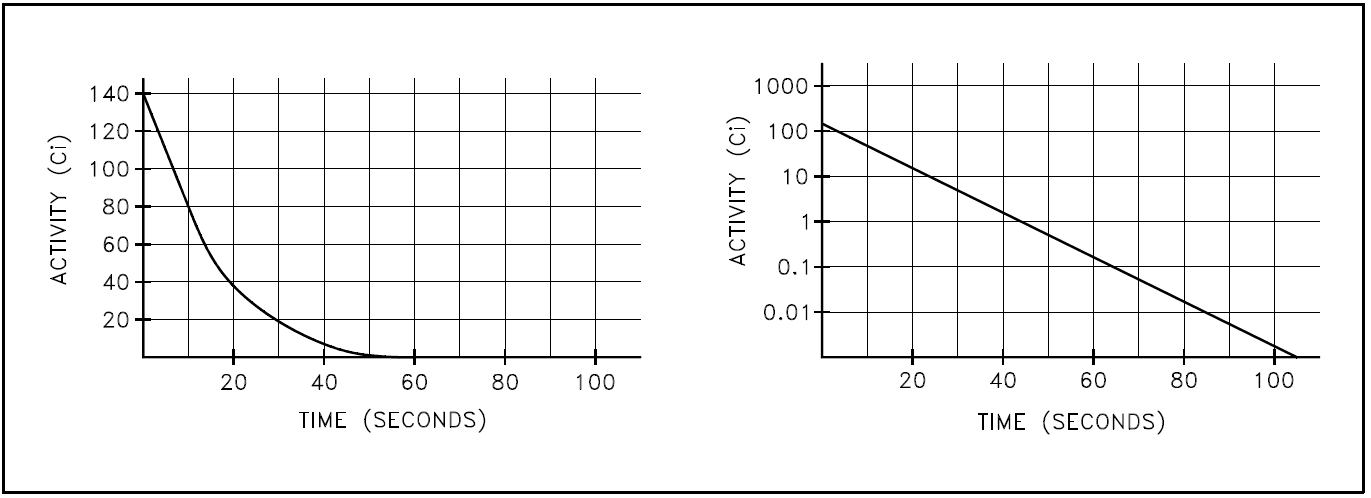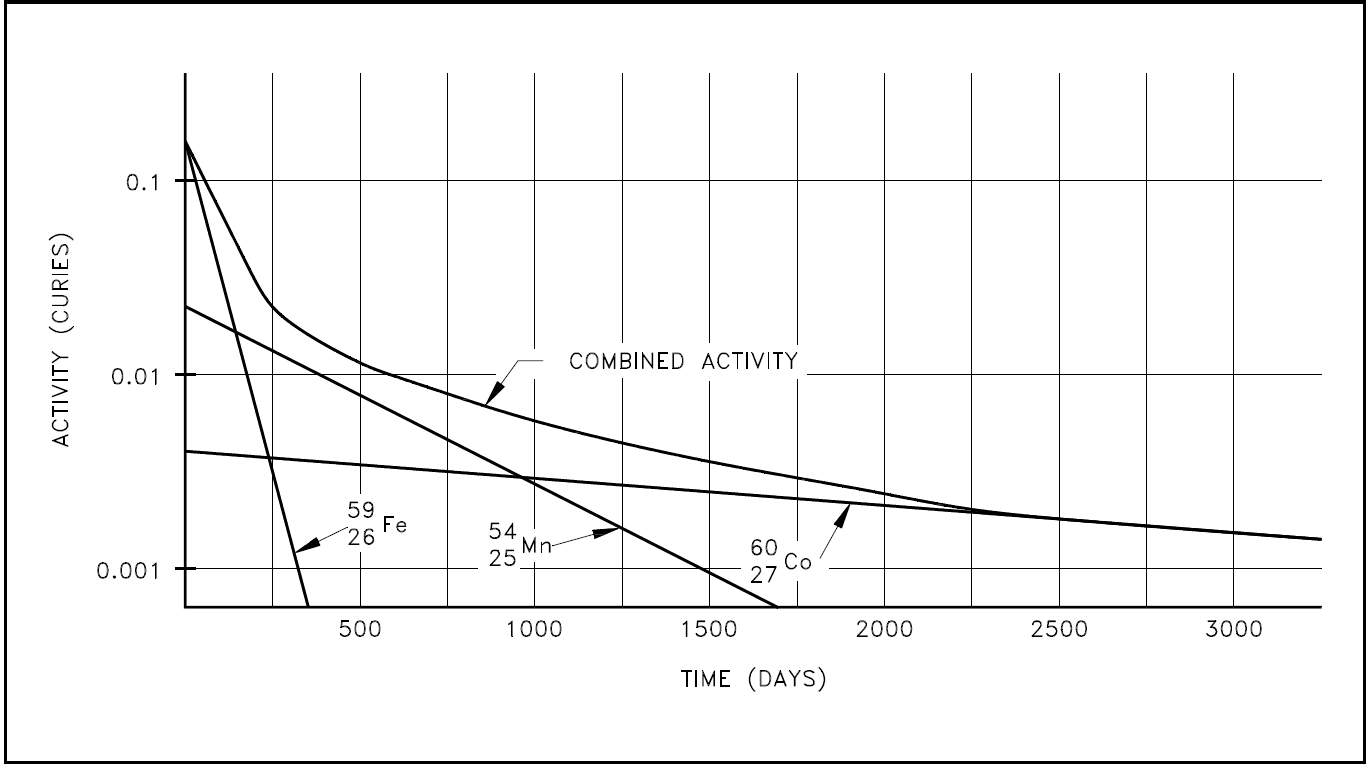
Plotting Radioactive Decay
 المؤلف:
U.S. Department of Commerce, National Technical Information Service, 1993
المؤلف:
U.S. Department of Commerce, National Technical Information Service, 1993
 المصدر:
The Nuclear Physics and Reactor Theory Handbook
المصدر:
The Nuclear Physics and Reactor Theory Handbook
 الجزء والصفحة:
p 35
الجزء والصفحة:
p 35
 29-3-2017
29-3-2017
 1674
1674
Plotting Radioactive Decay
It is useful to plot the activity of a nuclide as it changes over time. Plots of this type can be used to determine when the activity will fall below a certain level. This plot is usually done showing activity on either a linear or a logarithmic scale. The decay of the activity of a single nuclide on a logarithmic scale will plot as a straight line because the decay is exponential.
Plotting the data points calculated above on both linear and semilog scales results in the graphs shown in Figure 1.

Figure 1: Linear and Semi-log Plots of Nitrogen-16 Decay
If a substance contains more than one radioactive nuclide, the total activity is the sum of the individual activities of each nuclide. As an example, consider a sample of material that contained 1 x 106 atoms of iron-59 that has a half-life of 44.51 days (λ = 1.80 x 10-7 sec-1 ), 1 x 106 atoms of manganese-54 that has a half-life of 312.2 days (λ = 2.57 x 10-8 sec-1), and 1 x 106 atoms of cobalt-60 that has a half-life of 1925 days (λ = 4.17 x 10-9 sec-1). The initial activity of each of the nuclides would be the product of the number of atoms and the decay constant.

Plotting the manner in which the activities of each of the three nuclides decay over time demonstrates that initially the activity of the shortest-lived nuclide (iron-59) dominates the total activity, then manganese-54 dominates. After almost all of the iron and manganese have decayed away, the only contributor to activity will be the cobalt-60. A plot of this combined decay is shown in Figure 2.

Figure 2: Combined Decay of Iron-56, Manganese-54, and Cobalt-60
 الاكثر قراءة في النشاط الاشعاعي
الاكثر قراءة في النشاط الاشعاعي
 اخر الاخبار
اخر الاخبار
اخبار العتبة العباسية المقدسة


